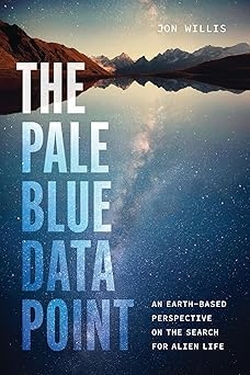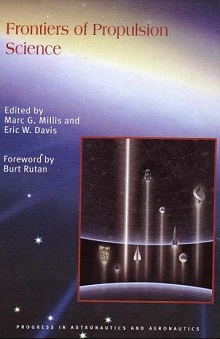We all relate to the awe that views of distant galaxies inspire. It’s first of all the sheer size of things that leaves us speechless, the vast numbers of stars involved, the fact that galaxies themselves exist in their hundreds of billions. But there is an even greater awe that envelops everything from our Solar System to the most distant quasar. That’s the question of the ultimate fate of things.
Nobody writes about this better than Fred Adams and Greg Laughlin in their seminal The Five Ages of the Universe (Free Press, 2000), whose publication came just after the 1998 findings of Saul Perlmutter, Brian Schmidt and Adam Riess (working in two separate teams) that the expansion of the universe not only persists but is accelerating. The subtitle of the book by Adams and Laughlin captures the essence of this awe: “Inside the Physics of Eternity.”
I read The Five Ages of the Universe just after it came out and was both spellbound and horrified. If we live in what the authors call the ‘Stelliferous era,’ imagine what happens as the stars begin to die, even the fantastically long-lived red dwarfs. Here time extends beyond our comprehension, for this era is assumed to last perhaps 100 trillion years, leaving only neutron stars, white dwarfs and black holes. A ‘Degenerate Era’ follows, and now we can only think in terms of math, with this era concluding after 1040 years. By the end of this, galactic structure has fallen apart in a cosmos littered with black holes.
Eventual proton decay, assuming this occurs, would spell the end of matter, with only black holes remaining in what the authors call ‘The Black Hole Era.’ Black hole evaporation should see the end of the last of these ‘objects’ in 10100 years. What follows is the ‘Dark Era’ as the cosmos moves toward thermal equilibrium and no sources of energy exist. This is the kind of abyss the very notion of which drove 19th Century philosophers mad. Schopenhauer’s ‘negation of the Will’ is a kind of heat death of all things.

But even Nietzsche, ever prey to despair, could talk about ‘eternal recurrence,’ and envision a future that cycles back from dissolution into renewed existence. You can see the kind of value judgments that float through all such discussions. Despair is a human response to an Adams/McLaughlin cosmos, or it can be. Even recurrence couldn’t save Nietzsche, who went quite mad at the end (precisely why remains a subject of debate). I have little resonance with 19th Century philosophical pessimism, so determinedly bleak. My own value judgment says I vastly prefer a universe in which expansion reverses.
Image: Friedrich Nietzsche (1844-1900). Contemplating an empty cosmos and searching for rebirth.
These thoughts come about because of a just released paper that casts doubt on cosmic expansion. In fact, “Strong progenitor age bias in supernova cosmology – II. Alignment with DESI BAO and signs of a non-accelerating universe” makes an even bolder claim: The expansion of the universe may be slowing. Again in terms of human preference, I would far rather live in a universe that may one day contract because it raises the possibility of cyclical and perhaps eternal universes. My limited lifespan obviously means that neither of the alternatives affects me personally, but I do love the idea of eternity.
An eternity, that is, with renewed possibilities for cosmic growth and endless experimentation with physical structure and renewed awakening of life. The paper, with lead researcher Young-Wook Lee (Yonsei University, South Korea) has obvious implications for dark energy and the so-called ‘Hubble tension,’ which has raised questions about exactly what the cosmos is doing. In this scenario, deceleration is fed by a much faster evolution of dark energy than we’ve imagined, so that its impact on universal expansion is greatly altered.
What is at stake here is the evidence drawn from Type 1a supernovae, which the Nobel-winning teams used as distance markers in their groundbreaking dark energy work. Young-Wook Lee’s team finds that these ‘standard candles’ are deeply affected by the ages of the stars involved. In this work, younger star populations produce supernovae that appear fainter, while older populations are brighter. Using a sample of 300 galaxies, the South Korean astronomers believe they can confirm this effect with a confidence of 99.999%. That’s a detection at the five sigma level, corresponding to a probability of less than one in three million that the finding is simply noise in the data.

Image: Researchers used type Ia supernovae, similar to SN1994d pictured in its host galaxy NGC4526, to help establish that the universe’s expansion may actually have started to slow. Credit: NASA/ESA.
If this is the case, then the dimming of supernovae has to take into account not just cosmological effects but the somewhat more mundane astrophysics of the progenitor stars. Put that finding into the supernovae data showing universal expansion and a new model emerges, diverging from the widely accepted ΛCDM (Lambda Cold Dark Matter) cosmology, which offers a structure of dark energy, dark matter and normal matter. This work forces attention on a model derived from baryonic acoustic oscillations (BAO) and Cosmic Microwave Background data, which shows dark energy weakening significantly with time. From the paper:
…when the progenitor age-bias correction is applied to the SN data, not only does the future universe transition to a state of decelerated expansion, but the present universe also already shifts toward a state closer to deceleration rather than acceleration. Interestingly, this result is consistent with the prediction obtained when only the DESI BAO and CMB data are combined… Together with the DESI BAO result, which suggests that dark energy may no longer be a cosmological constant, our analysis raises the possibility that the present universe is no longer in a state of accelerated expansion. This provides a fundamentally new perspective that challenges the two central pillars of the CDM standard cosmological model proposed 27 yr ago.
Let’s pause a moment. DESI stands for the Dark Energy Spectroscopic Instrument, which is installed on the 4-meter telescope at Kitt Peak (Arizona). Here the effort is to measure the effects of dark energy by collecting, as the DESI site says, “optical spectra for tens of millions of galaxies and quasars, constructing a 3D map spanning the nearby universe to 11 billion light years.” Baryon acoustic oscillations are the ‘standard ruler’ that reflect early density fluctuations in the cosmos and hence chart the expansion at issue.
Here’s a comment from Young-Wook Lee:
“In the DESI project, the key results were obtained by combining uncorrected supernova data with baryonic acoustic oscillations measurements, leading to the conclusion that while the universe will decelerate in the future, it is still accelerating at present. By contrast, our analysis — which applies the age-bias correction — shows that the universe has already entered a decelerating phase today. Remarkably, this agrees with what is independently predicted from BAO-only or BAO+CMB analyses, though this fact has received little attention so far.”
Presumably it will receive more scrutiny now, with the team continuing its research through supernovae data from galaxies at various levels of redshift. That dark energy work is moving rapidly is reflected in the fact that the Vera Rubin Observatory is projected to discover on the order of 20,000 supernova host galaxies within the next five years, which will allow ever more precise measurements. Meanwhile, the evidence for dark energy as an evolving force continues to grow. Time will tell how robust the Korean team’s correction to what it calls ‘age bias’ in individual supernova readings really is.
The paper is Junhyuk Son et al., “Strong progenitor age bias in supernova cosmology – II. Alignment with DESI BAO and signs of a non-accelerating universe,” Monthly Notices of the Royal Astronomical Society, Volume 544, Issue 1, November 2025, pages 975–987 (full text).



An expanding but decelerating universe… This reminds me of a dilemma that I thought would never be of consequence in the accelerating model.
It’s not like we never had to consider it seriously before. And for the most part we never expect to sense in any meaningful way. Born too early and with limited life expectancy.
But there are a couple of things about a first expanding and then collapsing universe that were brought to my attention visiting it or contemplating it thus far.
Not via a notice from a prominent authority, but a conundrum I encountered while reviewing the consequence of how electrons shift from one energy state to another and then drop back to a ground state.
Say you have an atom like hydrogen where THE electron in a ground state gets hit by a high energy photon, high enough to hit it up several energy levels. And not to get the quantum mechanics too complicated, imagine a model like Bohr’s hydrogen atom where the energy states are like orbits in the solar system. In this case where the electron is knocked up a couple levels, it is predicted to hang around there for a while.
But then it has something of a choice. It releases the same quantum of energy associated with its upward transition and goes back to its original state. OR… it stops off at an intermediate orbit and drops down to the ground state a little while later.
But then it has something of a “choice”.
By some means or another the electron “decides” whether it goes directto the ground state or experiences the thrilling longer ride of cascade through intermediate levels. All over the known universe. And the cascade could be more than one or two steps. The electron, so to speak, chooses.
Now back to the point where the universe putatively stops expanding. Does it shift into reverse? Does it duplicate all the motions that got it to that point at the end of time? That would be the maximum state of disorder, no? Max entropy.
Well, the next few moments shifted in reverse might be interesting to watch.
Because a true reversal of everything could be in terms of fractions 1 to zero.
If it is complete to the subatomic level, then that would mean that the cascade branches would roll back as before.
Or maybe they would go some other route? This phase of the universe would not be like the one in the Martin Amis novel, “Time’s Arrow”. Maybe more akin in concept to the title of his afather Kingley’s sf review “New Maps of Hell”.
But either way, unless quantum mechanics has already shed some light (sic) on this, it is likely an open question whether a contracting universe will reverse itself down to the subatomic level.
Yet issues like beta decay of unstable elements just might be solved, if we could watch. Unfortunately the idea that one could be an observer would violate the scenario. And by the time this experiment could take place, a lot of subatomic particles might be worn out anyway.
Oh, well.